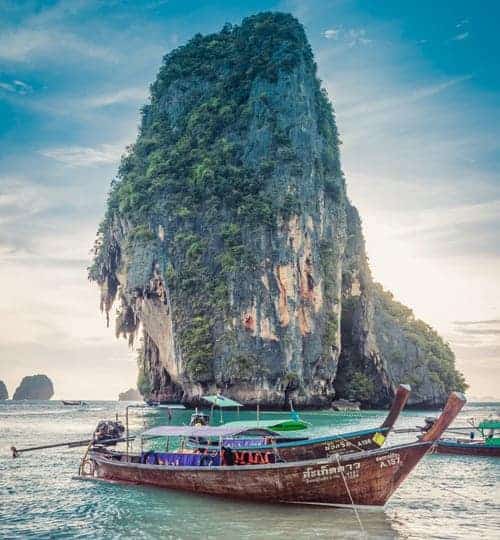Last Updated on October 12, 2024 by Greg Head
Exploring Asia with Responsible Tourism – Traveling in Asia is mesmerizing thanks to the variety of natural beauty, cultures and experiences it provides.
With tourism increasing and becoming such a big part of economy in many countries, the pressure on nature is more than ever.
Tourist comfort and convenience often scores higher on priority, making the tourism industry turn a blind eye to nature conservation and thus it becomes a responsibility of the tourist to be more mindful.
How can you be a responsible tourist and still see the best of Asia?
We are here to talk about just that.
Responsible Tourism was defined in Cape Town in 2002 alongside the World Summit on Sustainable Development.
Responsible Tourism is about “making better places for people to live in and better places for people to visit.”
Best Helicopter Tours in Nepal Costs
Sailing to Komodo National Park
Exploring Asia as a Responsible Travel
In this article, we have chosen to highlight 3 countries in particular: The Philippines, Thailand and India.
The reason for that is they are touristy nations which employ eco- friendly policies and allow visitors to travel responsibly.
For that reason, these countries are our most preferred vacations spots in Asia for people who want to holiday while supporting the local environment and communities.
Responsible Tourism to The Philippines
Beautiful Island nation with breath-taking views and bluest waters ever.
Ample opportunities for both water and land activities.
Where to Stay in The Philippines
ample number of eco-friendly resorts are strewn across the Island cluster, both luxury and budget.
Places like Green Canyon resort in Clark, Apulit Island Resort, Lagen Island resort or Miniloc Island resort in El Nido and Amarela in Bohol are great for an eco-friendly stay.
Of course, booking a homestay instead of a resort is always better.
No matter how eco-friendly the resort is, supporting the community directly is always the most responsible and sustainable option.
The best places to do that are either Banaue or Batanes.
What to do in The Philippines
Eco-toursim places are bountiful in the Philippines.
You can visit places like Masungi Geo-reserve, Tubbataha Reefs natural park, Puerto Princesa Subterranean River National Park, Island of Malapascua, Mount Apo Natural Park, Mount Hamiguitan Range Wildlife Sanctuary which is a celebrated world heritage site by UNESCO, and many more!
Eco Tourism Tips For the Philippines
Don’t indulge in activities which might degrade environment or harm it in some way, like Whale sharks are lured to the Tan-awan coastline of the Oslob.
Fishermen feed them small shrimp, drawing divers and snorkelers to see the highly sought-after animals, known as gentle giants of the sea.
It looks like a circus, looking at the animal walking up and down being fed.
Be mindful while traveling.
Don’t litter, that’s the least you can do to conserve the environment.
Especially while going on tours which are water based (island hopping or diving) – make sure you choose the most eco-friendly tour operator possible.
Unlike other countries, there are a few boutique agencies who offer a complete, eco-friendly vacation package in the Philippines.
This can be a good way to get help planning the trip you want, while supporting a local business in the process.
Mingle with the local tribes and cultures learn how they thrive in their environments sustainably, without any damage to nature.
Responsible Tourism to Thailand
known for tropical beaches, opulent royal palaces, ancient ruins and ornate temples displaying figures of Buddha, Thailand is truly Asia in its culture and flavours, bringing the best of Asia in one place.
It is known for health and wellness tourism but the eco-friendly version of the same is coming up too.

Where to Stay in Thailand
Thailand offers great eco-friendly places to stay like Villa Belle- Koh Samui over-looking the gulf of Siam, Soneva Kiri which is in Koh Kood, Thailand’s least populated island; Zeavola luxury resort, on the gorgeous Phi Phi Island amongst the rainforests and Keemala in Phuket which engages in many practices to lessen its carbon footprint, including water management, using its own fresh produce, and the design which aims at protecting the existing ecosystem.
What to do in Thailand
In Thailand, you can do a lot of eco-friendly activities like nature and water activities.
The Elephant Nature Park, New Heaven Reef Conservation Program, Trash Hero Thailand which is an NGO helping clean up beaches every weekend and Bangkok Tree House, a completely green – friendly place to hang out are top experiences to go for!
Eco – Tourism Tips For Thailand
The biggest hazard to natural resources in Thailand seems to be from the motorboats and ferries and speedboats which can pollute the environment at insane levels because they are poorly maintained.
The fumes and water cutting can be hazardously toxic.
It is best to avoid such transport as much as possible.
Don’t litter or strew anything on land or sea – the worst is plastic.
Use traditional dining methods and cutlery instead of takeaways or packages food to minimize waste.
Go for smaller boutique wellness resorts which still use eco-friendly materials to store and dispense products as compared to the modern ones who use a lot of use-and-throw plastic items.
Responsible Tourism to India:
A land of myriad colours and festivals and moods, India can be a glimpse in time for any traveller.
Every region in India is diverse and fresh from every other – making it an ideal place to spend month-long vacations.
Being a farmer’s country, one can avail ample eco-tourism opportunities and even rural tourism can be enjoyed.
Where to Stay in India
There are many eco-friendly and eco-sensitive resorts and staycation options in India like homestays and stays at national parks and also in monasteries.
Some popular eco-friendly destinations include – Almora, Bandhavgarh National Park, Deogarh, Gangotri, Gangtok, Gokarna, Great Himalayan National Park, Jaisalmer, Kanha National Park, Kutch, Madikeri, Kullu, Kottayam, Marari, Nubra Valley, Majuli, Tso Moriri, Spiti Valley, Khonoma Village – about 20km from Kohima (hornbill festival) and Thenmala, the first eco-toursim destination in India and the like.
What to do in India
You can do a wide variety of eco-friendly activities in India.
There are thousands of hikes in the Himalayas and other mountains like the Sahayadris and the Arravalis.
The valleys and the mountains are perfect sites for eco-tourism.
The many national parks provide an opportunity to observe wild – life up close.
Apart from these experiences, there can also be river islands on the list, oceanic island states like Andaman and Nicobar and Lakshadweep are also great choices.
World heritage sites in India are 38 in number out of which many are eco-tourism sites as well.
Eco – Tourism Tips For India
The diversity of peoples is mind-blowing, so when interacting with a tribe or a people, make sure you understand what might be offensive for them from a bilingual local.
The amount of trash you might see in India can be disturbing – don’t add to it.
Always carry water in your bottle anywhere in India.
Refill from a place that looks hygienic instead of buying water all the time to reduce plastic bottle trash.
There are purifiers in almost all eateries so it should not be a problem.
Walk everywhere
Else, hire cycles which are cheaply available everywhere.
Else, you can take an eco-friendly cycle—rickshaw to go places too.
This will help for the rickshaw puller and the environment.
You can plant trees at most destinations because plantation drives are going on at many places regularly.
India serves a lot of street food in containers made of dried leaf.
Choose the seller who does that instead of using plastic cups and bowls. (if you are feeling brave enough!)

